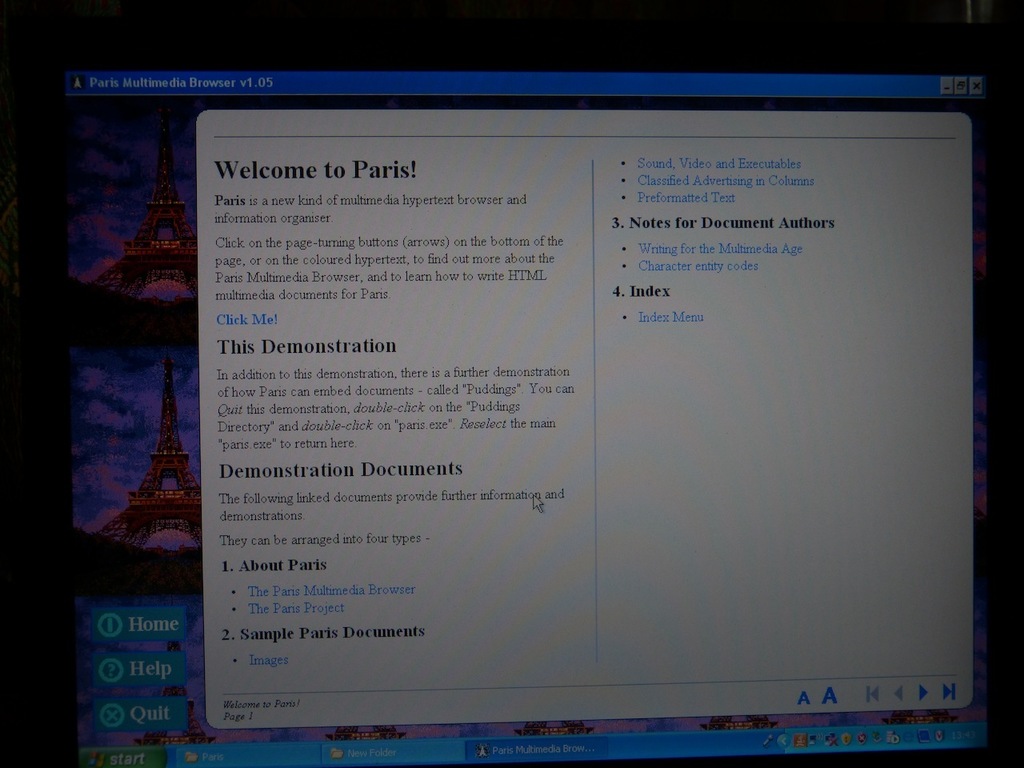HTML1 Documents : Authoring & Displaying
In GARDEN – which was a tool to enable authors, LAN network managers and end users to construct, distribute, monitor, manage and access – large multimedia applications (such as courseware learning materials, a university library resource centre and a distribution multimedia healthcare record – a simple and effective hypertext and Page mark up (for the display of multimedia elements and links) was designed and implemented in 1991/2.
With the launch of the World Wide Web thereafter, the HTML protocol was issued as a de facto standard.
Paris was designed and built to enable the authoring and the display of HTML1 Documents as Pages
An HTML document can be of any length/is of an indeterminate size – and theoretically/practically cannot be displayed on one screen. The design principle in Paris was that Paris would adapt automatically to any VDU/screen and would display part of a (bigger) page on a (smaller) screen, it would generate Page Turning Buttons on this page and the remainder of the document could be displayed as series of Pages .
The History feature – would provide a browsable set of such pages – which could be browsed and re-viewed.
Paris was built for the MS Windows Platform – to provide a portable html document tool for Floppy Discs and CDROM
Following The GPE, Media Language and GARDEN projects with a focus on open systems, distribution on the heterogenous network, Unix/X11/TCP-IP – and given the emerging standard HTML and the dominance of MS Windows – the Paris HTML Browser was designed and built with Borland Delphi. At <200 Kbytes, Paris provided for multimedia documents with embedded video and sound. It provided forthe delivery of multimedia HTML documents on a Floppy Disc where thesmall .exe file was shipped with the content. The executable small enough to allow a 1MB document to be shipped – at that time – on a Floppy Disk. It provided for auto scaling on VDU’s of all sizes.It provided a History feature where previously selected and displayed elements/screens were displayed as a browsable stack.
Paris was used to create a ‘concept demonstrator’ of a Browsable ‘E-Book’ and Training Materials Manual for the UK Wine & Spirit Educational Trust.





